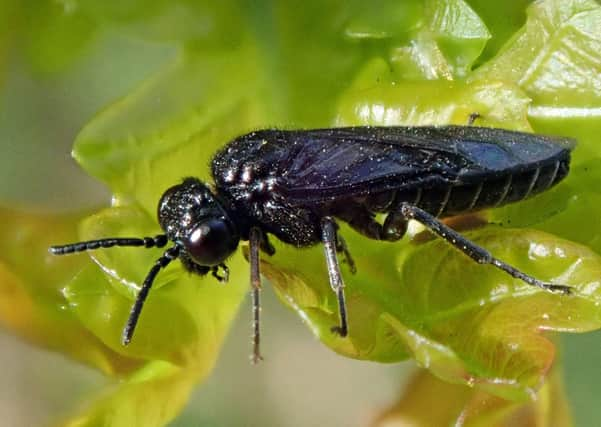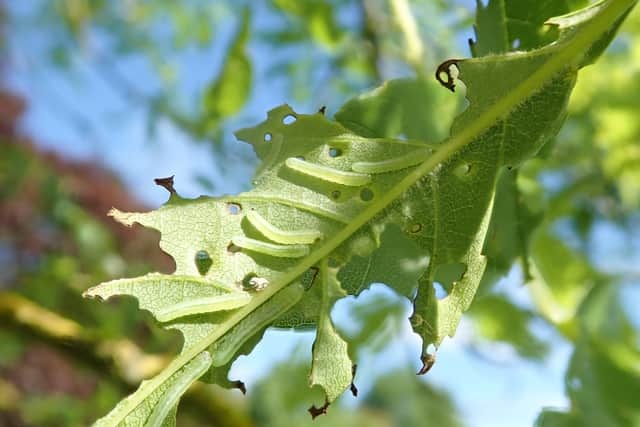Watch out for Ash Sawfly urges AFBI


Ash trees are a very familiar part of our landscape. After hawthorn, they are the most common hedgerow tree in Ireland and are home to a wide variety of wildlife as well as a useful timber product, for example, for making hurley sticks.
However, our ash trees are under threat from invasive pests and pathogens. At this time of year, ash trees are subject to defoliation by hordes of small lime-green caterpillars.
Advertisement
Advertisement
These caterpillars are the larval stage of ash sawfly (a relative of bees and wasps).


They can build up in tremendous numbers and completely consume all the leaf material on a tree leaving behind a bare, skeletonised canopy.
Ash sawfly is a new species to Ireland.
It was first recorded in Belvoir, Belfast in 2016 and has spread throughout the greater Belfast area and there are reports of it from as far afield as Co
Kildare. Dr Archie Murchie, an entomologist from the Agri-Food & Biosciences Institute (AFBI), said: “It is amazing how fast the sawflies have spread.
Advertisement
Advertisement
“I cycle along the Lagan towpath and you can see caterpillars all along the path.”
Ash sawfly can cause sporadic damage to trees on the continent and occasionally urban trees in Great Britain but in Belfast the trees are being defoliated year on year.
Dr Murchie said: “We are seeing consistent defoliation in Belfast ash trees and although the leaves will grow back, the trees’ growth is likely to be stunted.
“It may be that the sawflies have left their natural enemies behind, so there is nothing to eat them and regulate their populations.”
Advertisement
Advertisement
Another factor may be the interaction with another serious problem for ash, ash dieback disease.
This fungal pathogen has swept through Europe and was first found in Northern Ireland in 2012. It can seriously damage and kill ash trees.
Dr Murchie said: “It is depressing to see the state of our ash trees with dead branches caused by ash dieback and defoliation with ash sawfly.
“If another invasive beetle pest called ‘emerald ash borer’ makes it to Northern Ireland, we could lose the ash trees completely, in the way that elm trees were wiped out by Dutch elm disease.”
Advertisement
Advertisement
AFBI and the Department of Agriculture, Environment and Rural affairs (DAERA) are monitoring the spread of ash sawfly. Any sightings of ash sawfly can be logged on the TreeCheck web app, www.treecheck.net, which is run jointly by DAERA and the Department of Agriculture, Food and the Marine (DAFM) in ROI.